
|
HVDC Switches
Switches for HVDC applications are designed to close and open very rapidly in case of fault or for maintenance purposes. The switches may have to commutate load current while maintaining the flow of power within DC substation and its availability. All HVDC switches are activated by the highly reliable spring-spring mechanism and benefit of a huge experience and installed base of AC circuit-breaker technology delivered worldwide in regards to design technology, to quality in terms of supplier qualification, assembly processes and ISO conformity. Key Features:
|
Today's Challenging Environment
Globally the utility environment is becoming more complex and utilities are having to manage new challenges such as:
The only choice for many utilities is to restructure their grid systems to manage these challenges. Utilities are looking for cost effective solutions to transfer power and to improve the quality, stability and reliability of the grid which will anticipate their needs for the next 20 to 50 years.
GE's Solution
High Voltage Direct Current (HVDC) solutions are ideal for supporting existing AC transmission systems or for building new power highways. HVDC is a system which interconnects two AC networks, converting AC voltage to DC voltage, and DC voltage to AC voltage utilizing power electronics technology. HVDC systems enable transfer of power, interconnection of grids, integration of renewables and maximize grid performance.
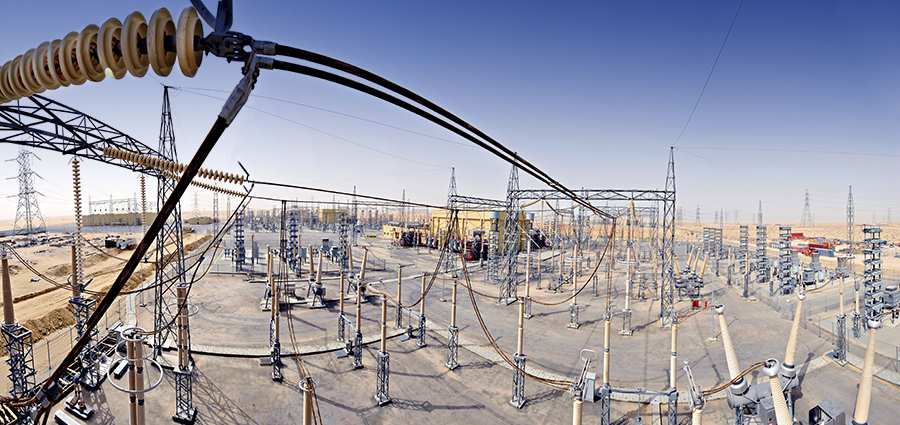 Back to back HVDC Interconnection
Back to back HVDC InterconnectionThe GE Advantage
GE’s HVDC Switches are developed based on the highest standards for performance, ratings, user convenience and reliability.
Every model is designed utilizing 3D design tools and analysis software to achieve the highest performance. Switches and Disconnectors are thoroughly type tested and subject to routine tests to meet or exceed the latest standards and requirements. Dependent on customer requirements, GE is able to design and supply highly customized products.
Based on years of global experience, deep domain expertise, manufacturing excellence and several deployments across multiple applications and industries, GE has dedicated projects teams working in partnership with our customers to ensure successful equipment implementations. GE provides customers with the following competitive advantages.
Robust Design Leveraging Cutting Edge Technology Provides High Performance and Lower Total Cost of Ownership
Manufacturing Excellence to Ensure Highest Quality Standards
Extensive Research, Testing and Proven Field Experience Resulting in Enhanced Reliability
Optional Features for Enhanced System Compatibility, Digital Integration and In-House Expertise
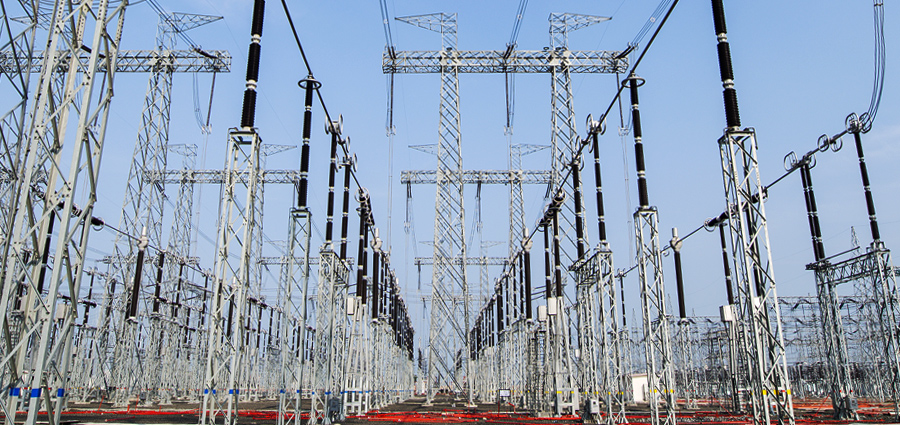 HVDC Substion Bina India
HVDC Substion Bina IndiaHVDC Switches
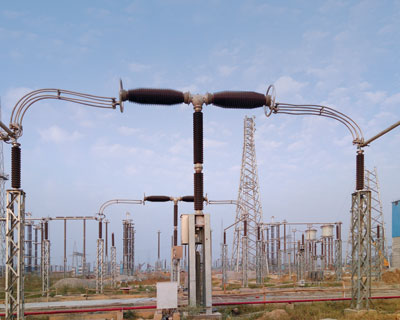 DC Switch in Champa India
DC Switch in Champa India
Where more than one HVDC Pole share a common transmission conductor (typically the neutral) it is advantageous to be able to commutate the DC current between transmission paths without interrupting the DC power flow.
NBGS – Neutral Bus Ground Switch
This switch is normally open but when closed it solidly connects the converter neutral to the station earth mat. Operation with this switch can normally be maintained if the converter can be operated in a bipole mode with balanced currents between the poles, that is, the DC current to earth is very small. The switch is also able to open, commutating a small DC unbalance current out of the switch and into the DC circuit.
NBS – Neutral Bus Switch
A NBS is in series with the neutral connection of each pole. In the event of an earth fault on one pole, that pole will be blocked. However, the pole remaining in service will continue to feed DC current into the fault via the common neutral connection. The NBS is used to divert the DC current away from the blocked pole to ground.
GRTS – Ground Return Transfer Switch
The connection between the HVDC conductor and the neutral point includes both a high voltage disconnector and a GRTS and is used as part of the switching operation to configure the HVDC scheme as either a ground return monopole or a metallic return monopole. The disconnector is maintained open if the HV conductor is energized in order to isolate the medium voltage GRTS from the high voltage.
The GRTS is closed, following the closing of the disconnector in order to put the HV conductor in parallel with the earth path. The GRTS is also used to commutate the load current from the HV conductor transferring the path to the earth (or ground return) path. Once current flow through the HV conductor is detected as having stopped, the disconnector can be opened, allowing the HV conductor to be re-energised at high voltage.
MRTB – Metallic Return Transfer Breaker
The MRTB is used in conjunction with the GRTS to commutate the DC load current between the earth (ground return) and a parallel, otherwise unused, HV conductor (metallic return).
The MRTB closes in order to put the low impedance earth return path in parallel with the metallic return path. The MRTB must also be able to open, causing current flowing through the earth return to commutate into the much higher impedance metallic return path.
Bypass Switch (BPS) and Fast Acting Discharge Switch (FADS)
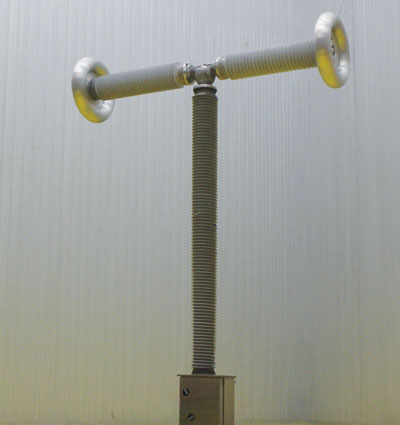 Bypass Switch BPS during Testing
Bypass Switch BPS during Testing
This switching device can be used either as a HVDC by-pass or a fast discharge switch.
As a by-pass switch , it is connected across each converter valve group in HVDC schemes using more than one independent converter per pole. It shall closes rapidly to by-pass a converter group that is being taken out of service and commutate the current back into a valve group that is being taken back into service.
As a fast acting discharge switch, it is connected between one pole and a resistance connected to the ground. It remains opened until a fault occurs in AC network. AC circuit-breaker clears the fault, but a trapped charge remains in the HVDC line and shall be discharged before the AC circuit-breaker re-close and re-energize the poles 300 ms later: for it, fast acting discharge switch shall perform a fast CO within these 300 ms to discharge and re-isolate the pole from the ground.
High Speed Switch
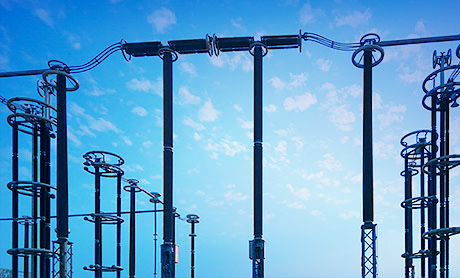
High speed switches can be used either as a line paralleling switch or either as converter paralleling switch.
As a line paralleling switch, it is connected in series to one or more high voltage pole conductors allowing one or more line to be connected in parallel or to revert to a single line operation while maintaining the flow of HVDC power.
As a converter paralleling switch, it is connected in series to each converter at the high voltage DC terminal where 2 or more converters are connected in parallel onto a common pole conductor. It is designed to allow additional converter(s) to be connected in parallel or to disconnect some of them while conducting the load current.